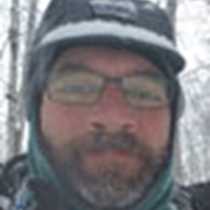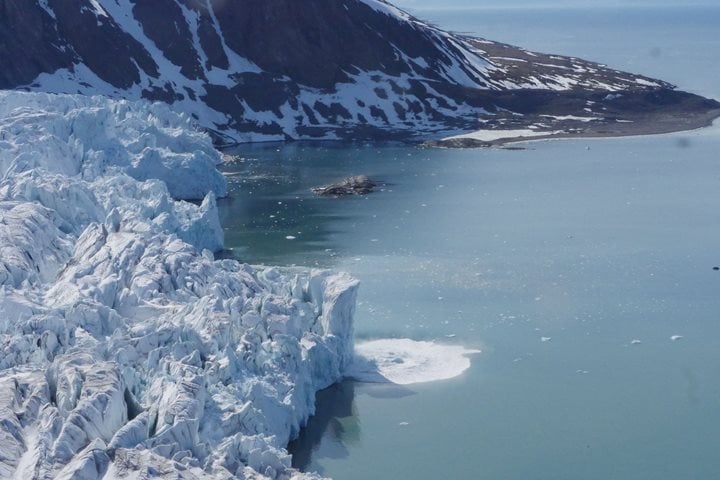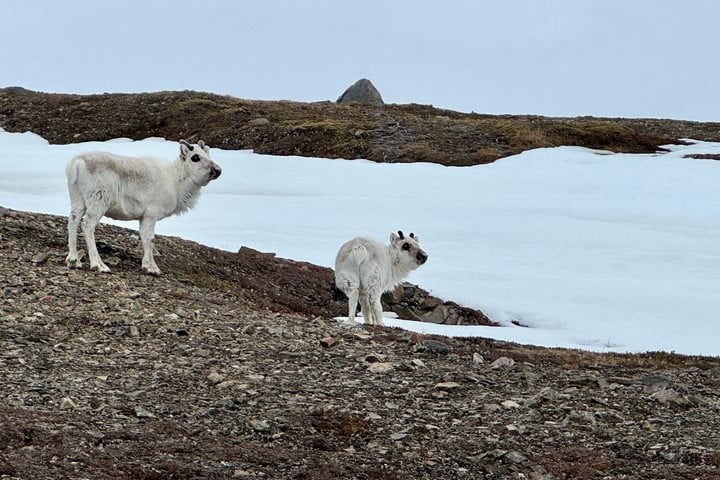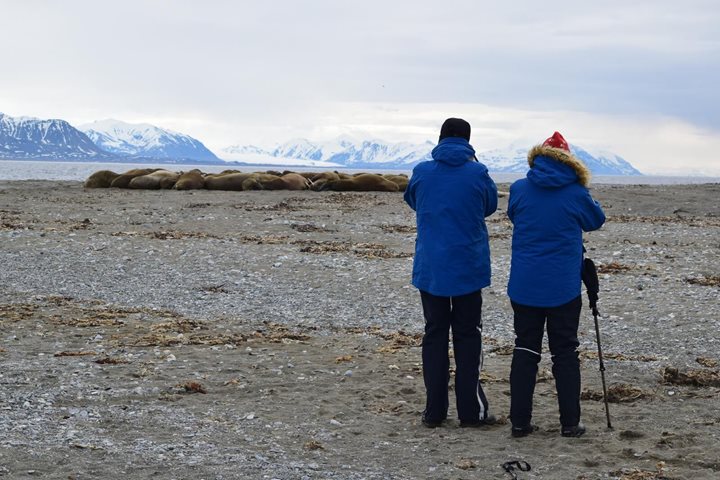Our first full day in Svalbard could not have begun any more spectacularly. Just past 0600 as we were roughly six miles from the entrance to Hornsund, the southerly most fjord on the west side of Spitsbergen, several telltale blows from whales were spotted ahead of the ship. Making our way towards the entrance we were soon within visual range to identify the species of whales. The robust heart shape blows, so well backlit by the already bright Arctic morning sun, were that of the ubiquitous humpback whale. A little further in the distance tall columnar spouts over the surface followed by the slow arching back and obvious falcate dorsal of the mighty fin whale. The conditions were simply ideal for spotting and viewing whales. Near glass-calm waters and a light breath of Arctic air made it quite comfortable for all to step out on the decks and enjoy the show once the announcement was made that there were whales off the bow.
The fin whale weighing in at nearly 130 tons and measuring nearly 24 meters (80 feet) is the second largest animal to have ever roamed the Earth, second only to the blue whale. Humpback whales, one of the most abundant baleen whales on the planet are much smaller in both length and weight, at 16m (50 feet) and 45 tons. We made a cautious approach on both species and observing that they were obviously feeding near the surface as their dive times were very short, less than a minute. These whales have just recently returned to the productive Arctic waters from the equatorial regions of the northern hemisphere, to spend the long sun-filled days feeding. Both groups of animals made very close approaches to the ship putting on quite a show. The humpbacks had surfaced right off the bow multiple times, their ventral pleats extended as they filtered the thousands of gallons of water through their baleen. Having turned our attention to the fin whales as we noticed a group of three that included a calf of the year, its mother, and a likely escort male. This is noteworthy because of all the years of experience on board our ship no one has seen a young fin whale calf in these waters. They too made a very close pass by the ship putting on quite a show. As an added bonus several groups of harp seals revealed themselves with the telltale phalanx of a wake as they made their way to foraging locales. Upon close inspection it could be seen that they were doing “the backstroke” that is they were swimming upside down on their backs with their heads held above the water, a curious way to travel for a seal.
Shortly before lunch the ship had pulled into Samarinevågen, one of the side fjords of Hornsund, where a walrus female and her nearly two-year-old calf were spotted hauled out on a piece of glacial ice just barely large enough for the two of them. This is a rather rare site in this part of Svalbard and even rarer still is to see a nearly full grown calf with its mother. The pair were quite at ease as the captain maneuvered the ship to within a few hundred meters giving everyone a great look at this Arctic oddity.
Gnålodden is situated on the north side of Hornsund and is characterized by the towering pinnacle of rock named Gnålberget, which serves as home to over 15,000 pairs of Kittiwakes and several other species of nesting seabirds. This prominent feature and the moss and tundra covered ground at its base made for a wonderful setting for our first landing. The site also has a good deal of history associated with it dating back to the Russian Pomars of the 18th and 19th centuries that first came here to hunt walrus, polar bears, and trap arctic foxes. Later Norwegian trappers occupied this site, and a typical hut sits at the base of Gnålberget making the setting complete. Exploring this Arctic landscape was all the more exciting when an arctic fox crossed the paths of some of the hiking groups and the cacophony of the goings on on the bird cliffs filled the air. Splashes of color from the patches of the purple saxifrage, a low growing hardy arctic plant, added another layer for the senses to take in.







